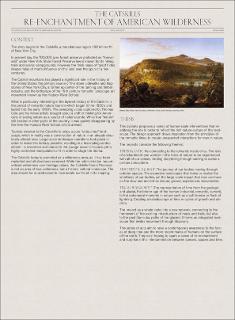The Catskills: Re-enchantment of American Wilderness
Master thesis
Submitted version

Permanent lenke
https://hdl.handle.net/11250/2686129Utgivelsesdato
2020-06Metadata
Vis full innførselSamlinger
Beskrivelse
The Catskills Mountains of New York state changed the way Americans view nature. It was the birthplace of the 19th century romantic landscape art movement known as the Hudson River School that inspired a sense of national pride in the American wilderness, and led to the emergence of nature tourism in the Catskills and beyond.
However, large scale landscape operations took place in order to make nature tourism convenient and comfortable for visitors, resulting in a contradiction - a reverence and marvel in the savage power of nature, yet a highly controlled manipulation of it in order to experience it in a romanticised way.
Today the Catskills is promoted as a wilderness area having been heavily reforested and most manmade structures removed. While the state has prioritized wilderness over heritage values, the Catskills Forest Preserve is not an area of true wilderness, but a cultural landscape. The area should be re-addressed to incorporate our hand in its shaping.
The project proposes a series of human-scale interventions that reimagine romantic era design principles to reflect the rich natureculture of this landscape. These landscape acts aim to raise a contemporary awareness to the forces of deep time of the geologic and glacial that shaped the vistas and cliffs, in relation to the more recent marks of man. The interventions exist hoping to spark a sense of reenchantment and surprise in this interconnection between species, spaces and time.